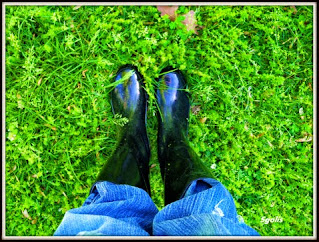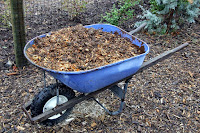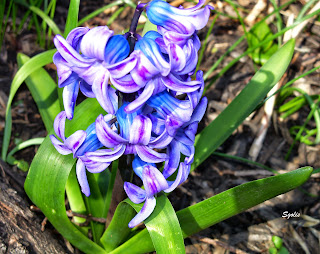No matter what season a gardener must dress defensively to protect themselves from the weather and from garden pests.
For yard and garden makeovers that require you to clean up brush, debris, or leaf removal you need to wear protective clothing and accessories. This is your first defense for preventing a tick, mosquito, brown recluse spider. or poisonous snake bite.
 |
| Rubber boots good for high grass or brush |
If the job involves manicuring an overgrown yard and garden, then it is wise to dress to protect yourself. A yard that has leaf matter or overgrown brush will have borers, spiders, ticks, fleas, chiggers, mites, snakes, and rodents.
For heavy-duty yard clean up jobs I wear a long sleeve Columbia Omni shade shirt that provides me with ultraviolet protection by reflecting the sun rays, this shirt also whisks the moisture from my skin making my skin not as desirable to the tick as they are attracted to moisture and dark areas of the body; stomach, behind the knees, inner thigh, underarm. I also wear light color shirts only; white and pale pastels because the light colors reflect the sunlight and it is easy to see ticks, spiders, or other insects crawling on you.
I will tuck the shirt into long pants and then I wrap the leg of the pants tightly around my waist and then put on rubber mid-calf or knee-high boots.
Tips:
Before putting on my garden wear I spray clothing including socks and undergarments with Deep Woods off. I will also spray the rubber boots with insect repellent. This is how I protect myself from bug bites.
Wear a sun reflective hat when doing yard work. It is helpful in keeping ticks from getting in your hair. When trimming shrubs the ticks could be on the leaves. If you brush the leaf the tick may get onto your hat. Treat the hat by spraying Deep woods off or other deet insect repellent onto the hat.
The best way to prevent insects from biting you is to be defensive. Treat the lawn and gardens with diatomaceous
earth before you work to kill the pests. Wait a minimum of 4 days for the brown recluse, ticks, and fleas to die off.
Notes from sgolis:
The pests in my yard are very bad this year and I believe it is due to a mild winter and a warm and damp early spring. We have an infestation of brown recluse spiders, fleas, ticks, and snakes. I have been out working in the yard and garden since late March and wear rubber garden boots daily.
Notes from sgolis:
The pests in my yard are very bad this year and I believe it is due to a mild winter and a warm and damp early spring. We have an infestation of brown recluse spiders, fleas, ticks, and snakes. I have been out working in the yard and garden since late March and wear rubber garden boots daily.


























